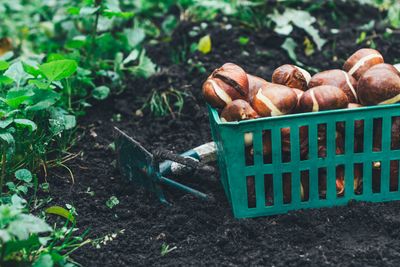Luckily, moving flower bulbs may be a simple solution to this problem.
Should You Move Bulbs?
Once planted, many bulbs do not need to be moved. However, in some cases, it will become necessary for bulbs to be transplanted. Moving flower bulbs is most often needed when a plant becomes too dense. As bulbs multiply throughout the years, the space needed for adequate root growth of the bulbs diminishes. One important sign of dense plantings is the lack or decreased number of flowers produced during the bloom period. While this problem proves troublesome for gardeners, the solution is relatively simple.
When to Transplant Bulbs
The best time to transplant spring bulbs is in summer or fall, once the foliage has sufficiently died back. Flowering spring bulbs gather energy for next year’s blooms through their foliage. Therefore, it’s imperative that the plants are allowed to die back to the ground naturally before attempting to move the bulbs. Once the plants have died back, it is then safe to dig for the bulbs and transplant them into their new growing locations. While moving the bulbs with the foliage intact is possible, it is not recommended. If you’re in need of moving summer flowering types, like canna or dahlia, wait until the end of fall, again waiting until the foliage has died back. In warmer climates, these can be transplanted to a new location, but in cooler regions this is the time for digging up and storing the bulbs until the following planting season.
How to Transplant Bulbs
The process of transplanting bulbs is relatively simple. When digging for bulbs, always make certain to wear gloves, as some flower bulbs contain toxins that may cause irritation to skin. First, locate the flower bed to be dug. Since the flower bulbs will be dormant, the bulbs may be difficult to locate. Marking the perimeter of the garden bed while the plants are blooming is one way to make the process easier. As the flower bulbs are dug, gently separate them. This can be done by separating each bulb into multiple pieces, or by separating the bulbs into smaller clumps, depending on the type of bulb being separated. Once the bulbs have been separated, replant them into your desired well-draining location. Generally, most flower bulbs should be planted at twice the depth as their height. This will ensure the best chance of success as bulbs begin to take root and prepare for the next bloom period.
